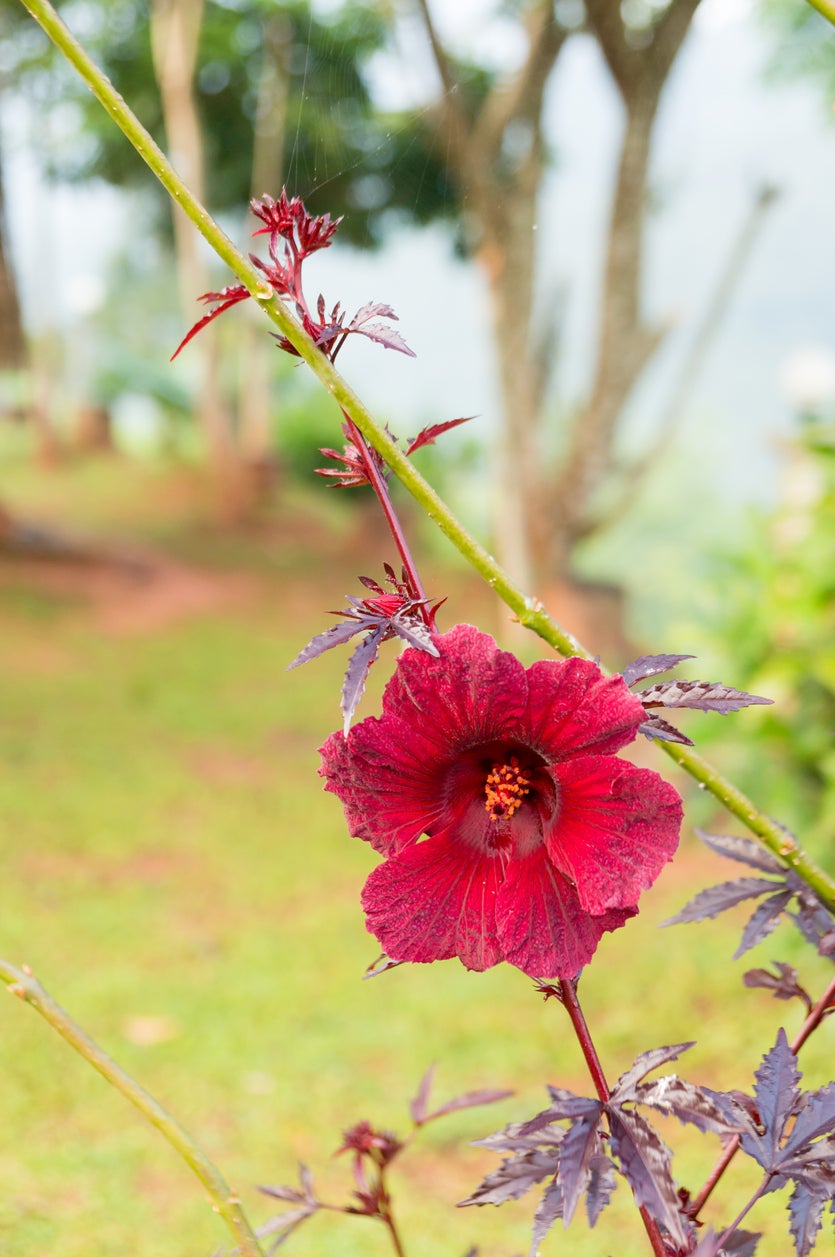Cranberry Hibiscus Info – Growing Cranberry Hibiscus Plants

Gardeners usually grow hibiscus for their showy blooms but another type of hibiscus, cranberry hibiscus, is used primarily for its gorgeous deep purple foliage. Some folks growing cranberry hibiscus know that it has another lesser-known attribute as well. It’s edible!
What are Cranberry Hibiscus Plants?
Cranberry hibiscus plants (Hibiscus acetosella) are multi-stemmed shrubs that grow from 3 to 6 feet (1-2 m.) in height with green/red to burgundy serrated leaves. The foliage looks much like that of Japanese maple.
Cranberry hibiscus is also referred to as African rose mallow, false roselle, maroon mallow, or red leaved hibiscus. Cultivars to look for include:
- ‘Red Shield’
- ‘Haight Ashbury’
- ‘Jungle Red’
- ‘Maple Sugar’
- ‘Panama Bronze’
- ‘Panama Red’
The plants bloom late in the growing season with small dark crimson to purple flowers.
Cranberry Hibiscus Info
Cranberry hibiscus plants are native to South Africa; the tropical, subtropical, and arid regions of South, Central, and North Africa; and the Caribbean.
It is assumed to be a hybrid of a wild African hibiscus species, but today’s cultivars are believed to originate in Angola, the Sudan or Zaire, and then purported to have been introduced into Brazil and Southeast Asia early on as a crop.
Is Cranberry Hibiscus Edible?
Indeed, cranberry hibiscus is edible. Both the leaves and flowers can be ingested and are used raw in salads and stir fries. The flower petals are used in tea and other beverages. The flowers are harvested once they have folded and are then steeped in hot water or blended with lime juice and sugar for a delicious beverage.
Gardening tips, videos, info and more delivered right to your inbox!
Sign up for the Gardening Know How newsletter today and receive a free copy of our e-book "How to Grow Delicious Tomatoes".
The tart leaves and blooms of cranberry hibiscus plants contain antioxidants, calcium, iron, and vitamins B2, B3, and C.
Growing Cranberry Hibiscus
Cranberry hibiscus plants are tender perennials in USDA zones 8 to 9 but can be grown as annuals in other zones. Since they bloom so late in the season; however, the plants often are killed off by frost well before bloom time. Cranberry hibiscus may also be grown as a container specimen.
Cranberry hibiscus favors full sun but will grow in light shade, albeit a bit leggy. It grows in a variety of soil types but does best in well-draining soil.
Cranberry hibiscus plants look wonderful planted in cottage gardens or other perennials groupings, as a single specimen plant, or even as a hedge.
Cranberry Hibiscus Care
Cranberry hibiscus plants are, for the most part, disease and pest resistant.
If left to their own devices, cranberry hibiscus plants tend to grow rather lanky, but they can be reined in by pruning them repeatedly to not only maintain a bushier shape but to restrain their height as well. Prune cranberry hibiscus plants when young to shape them into a hedge.
Cut the plants back at the end of the season, mulch well, and depending upon your USDA zone, they may return to grow a second year.
You can also take cuttings in the fall to save plants for the next growing season. Cuttings will easily root in either soil or water and will do well as indoor potted plants during the winter months.

Amy Grant has been gardening for 30 years and writing for 15. A professional chef and caterer, Amy's area of expertise is culinary gardening.
-
 Looking For Plants To Give You The Soft And Fuzzies? Try These 5 Fuzzy Leaf Plant Options
Looking For Plants To Give You The Soft And Fuzzies? Try These 5 Fuzzy Leaf Plant OptionsLovers of texture, drama, silver foliage and tactile plants will adore these special sensory garden additions. These fuzzy leaf plant options will leave you all aglow
By Susan Albert
-
 Get Ready For A Summer Of Hummers! Grow These Full Sun Hummingbird Plants and Flowers
Get Ready For A Summer Of Hummers! Grow These Full Sun Hummingbird Plants and FlowersIf you’re lucky enough to enjoy a sunny backyard, make sure you are maxing out on your pollinator opportunities and grow these full sun hummingbird plants and flowers
By Tonya Barnett